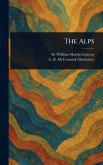"Picturesque Tour From Geneva to Milan, by Way of the Simplon" offers a fascinating glimpse into early 19th-century travel through the stunning landscapes of Switzerland and Italy. Authored by Jean Frédéric Ostervald and Gabriel Lory, this tour recounts a journey from Geneva to Milan, focusing on the scenic route through the Simplon Pass. The book provides vivid descriptions and insights into the cultural and natural wonders encountered along the way. This historical travelogue captures the spirit of exploration and the allure of the European continent during a transformative period. Readers will appreciate the detailed observations and the sense of adventure that permeates the narrative, making it an invaluable resource for those interested in the history of travel, European landscapes, and the cultural heritage of the regions traversed. This work has been selected by scholars as being culturally important, and is part of the knowledge base of civilization as we know it. This work was reproduced from the original artifact, and remains as true to the original work as possible. Therefore, you will see the original copyright references, library stamps (as most of these works have been housed in our most important libraries around the world), and other notations in the work. This work is in the public domain in the United States of America, and possibly other nations. Within the United States, you may freely copy and distribute this work, as no entity (individual or corporate) has a copyright on the body of the work. As a reproduction of a historical artifact, this work may contain missing or blurred pages, poor pictures, errant marks, etc. Scholars believe, and we concur, that this work is important enough to be preserved, reproduced, and made generally available to the public. We appreciate your support of the preservation process, and thank you for being an important part of keeping this knowledge alive and relevant.
Bitte wählen Sie Ihr Anliegen aus.
Rechnungen
Retourenschein anfordern
Bestellstatus
Storno








